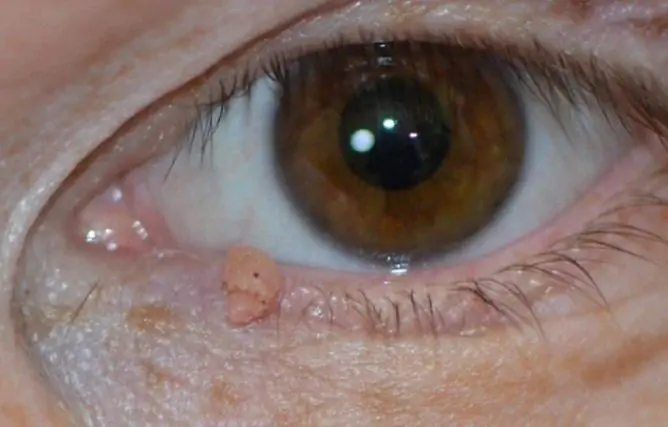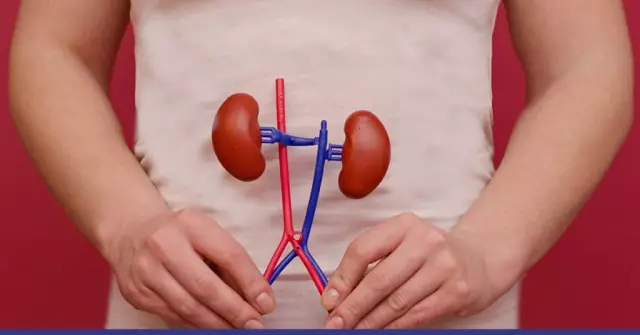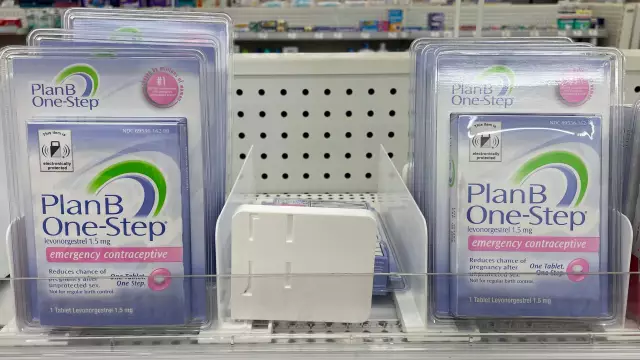- Author Rachel Wainwright [email protected].
- Public 2023-12-15 07:39.
- Last modified 2025-11-02 20:14.
Proper care after removal of papilloma

After removal of the papilloma, careful care of the operated area is necessary, since infections may become attached to the wound. The crust that forms during the healing period should not be wetted, overheated in the sun, or subjected to mechanical stress. Young skin after peeling off a scab also needs careful handling. Than after removing the papilloma to treat the damaged area, the specialist who performed the procedure should advise. As a rule, various antiseptic agents are prescribed in combination with vitamin therapy.
How to care for a wound after papilloma removal
The wound after removal of the papilloma is a funnel-shaped cavity, which corresponds in diameter and depth to the eliminated skin formation. Swelling and redness of the surrounding skin is likely within 24 hours after surgery. Since healing occurs without a dressing, a scab forms from the necrotic tissue over time. This process takes 2-4 weeks, as a result of which the crust of lymph and clotted blood adheres tightly to the wound surface and protects it from pathogenic microflora.
For the formation of a scab, constant ventilation of the wound is necessary. Fresh air dries out the lymphatic fluid protruding to the surface, which coagulates and forms first a film, and then a crust. Under this crust, epithelialization of the wound occurs, therefore it can be called a "biological dressing".
After removal of papillomas, it is impossible to allow a violation of the integrity or premature elimination of the crust, as this provokes severe bleeding, the formation of scars and age spots, as well as infection of a fresh wound. It is strictly forbidden to peel off the crust or non-torn papilloma tissue on your own. It should be borne in mind that softening or, on the contrary, overdrying can lead to exfoliation of the scab. Based on this, it is temporarily impossible to wet the wound, apply ointments, creams and other cosmetics to it. In addition, exposure to ultraviolet radiation should be limited as much as possible.
If the wound is infected after removal of the papilloma, and purulent contents begin to accumulate under the scab, then the crust must be removed under medical supervision. To do this, it is thoroughly soaked with furacillin or a solution of hydrogen peroxide and, after softening, it is carefully lifted by the separated part. The scab is peeled off without excessive force and cut with sterile scissors so that its fixed part stays in place.
During the normal recovery process, after the crust has passed away, thin skin remains, which is characterized by a bright pink tint. After several months, the color difference is smoothed out, and the operated area no longer differs from the surrounding tissues.
The newly formed skin after removal of papillomas should not be treated with alcohol lotions, scrubs and irritating ointments. Contact with household chemicals and any chemically active substances is excluded. During hygiene procedures, care should be taken not to rub the young skin with a washcloth or pumice stone, and also not to use a razor in the operated area. The use of foundation and other decorative cosmetics is not recommended if the papilloma was removed on the face. At the same time, it is necessary to lubricate the skin with sunscreen, as it is very sensitive to sunlight, prone to burns and increased pigmentation.
How to prevent complications after papilloma removal
As a rule, after removal of papilloma, complications arise as a result of improper wound care. Scarring and long-term recovery are most common with a weak immune system. In some cases, the course of infectious processes is possible, accompanied by purulent discharge. To prevent such consequences, you should strictly adhere to the recommendations of a specialist who was involved in the elimination of skin formation. The list of medications is made up depending on individual indicators - wound localization, skin condition and other features, but it must include antiseptic and anti-inflammatory drugs.
How to treat the wound surface after papilloma removal? Solutions of brilliant green, iodine and potassium permanganate have a disinfecting effect. After the crust has peeled off, a 1% hydrocortisone ointment may be prescribed, which is applied twice a day to the healed wound for 10 days.

During the rehabilitation period, it is important to increase the regenerative function of the skin, improve its elasticity and resistance to aggressive environmental factors. To do this, use solutions containing vitamins A and E. Hyaluronic acid, which is part of some creams and gels, creates a thin film on the skin surface, which, without interfering with oxygen exchange, stimulates the synthesis of collagen and elastin, and also revitalizes rough tissues. Gentle peeling with glycolic acid removes dead particles and smoothes the skin structure without damaging it.
After removal of the papilloma, it is necessary to promptly normalize the production of elastin and collagen for the formation of connective tissue, and this is possible only with intensive skin nutrition. Vitamins, minerals and amino acids entering the body greatly contribute to the healing and regeneration of tissues.
Radical elimination of skin lesions always entails the risk of further complications, therefore it is better to contact experienced surgeons, and not to a beauty salon. You can avoid adverse effects by strictly following all medical prescriptions and providing your skin with respect and careful care.
Found a mistake in the text? Select it and press Ctrl + Enter.






